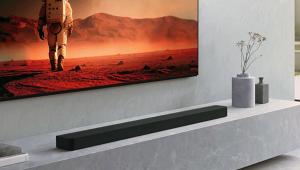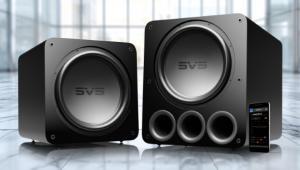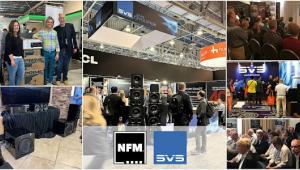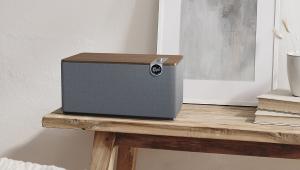Say Buh-Bye to These AVR Features
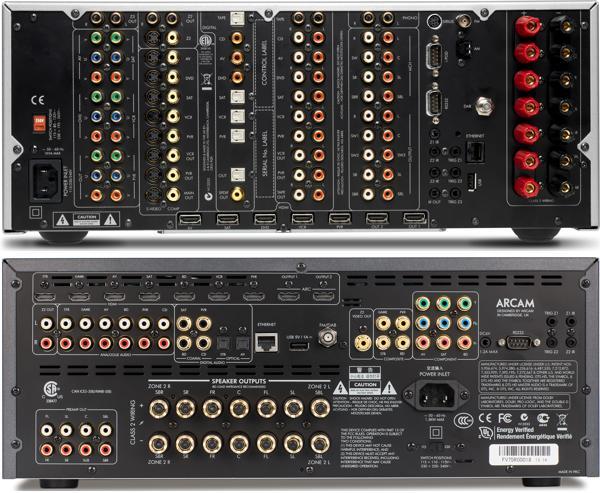
Of course, lower-end models always have fewer features than higher-one ones. But even some pricey models are starting to unclutter their back panels. Here's what I wrote about vanishing connectivity options in a review that compared the Arcam AVR750 to its predecessor, the AVR600 (both shown above):
On the back panel, the old column layout has given way to a more conventional one. Component video has been reduced from five inputs to three and there is no longer a component output. Composite video, digital audio, and analog audio have been similarly reduced (not likely a problem) and S-video eliminated (good riddance). The phono input is gone and the number of subwoofer outputs has shrunk from three to one. The 7.1-channel preamp outputs are no longer joined by multichannel-ins, so you can’t use the receiver's estimable amp section with a separate pre-pro. Why the draconian housecleaning? The company says it has adapted to current consumer habits.
Let's note the passing of certain features, starting with connectivity. Today's video connectivity is all about the latest version of HDMI. Most receivers on the market use HDMI 1.4, 1.4a, or 1.4b, but with HDMI 2.0 coming in, expect the older versions to thin out. As Sony's Aaron Levine pointed out, HD-capable component video is being scaled back and may disappear altogether due to the Hollywood-induced "analog sunset," which is discouraging the use of non-copy-protected analog interfaces in TVs, Blu-ray players, and receivers. S-video is dead, though composite video lingers for legacy and low-quality source components.
As the go-to interface for high-res sound as well as high-def picture, HDMI is also reducing the profusion of audio jacks. Manufacturers are providing fewer stereo analog and digital ins and outs, often eliminating outs entirely, though most people are probably satisfied with the number that remains. Multi-channel analog jacks are another story. Marantz still offers both multi-ins and multi-outs on certain models but other manufacturers are eliminating one or both. I'm not sorry to see multi-ins disappear because few of today's Blu-ray players have multi-outs (step-up Oppos being the exception). But I'm concerned by the disappearance of multi-outs, a.k.a. preamp outputs, because they enable the receiver to serve as a surround pre-pro with an outboard multi-channel power amp. Manufacturers should think twice about eliminating this upgrade path.
THX-certified receivers are getting thinner on the ground. THX confirms that fewer receivers are being submitted for testing and certification, though Pioneer and Onkyo are still hanging in there. That's unfortunate because THX AVR certification is one way to verify that you're buying an amp that can play at specified levels in rooms of a specified size. Even so, a manufacturer can still build an amp with some dynamic oomph without paying for the licensing and other expenses of THX. THX's certification of soundbars hasn't gotten far because its specifications favor larger bars than most manufacturers prefer to market. That may change. The good news is that THX is adding a couple of new manufacturers to its loudspeaker certification program, with announcements expected later this year.
SiriusXM seems to be disappearing, sort of. The dedicated jack for a satellite tuner has quietly gone away. "Less than 10 people used the feature in our old AVR range," noted Arcam's Charlie Brennan. Complicating matters, according to Chris Walker of Pioneer, is the fact that SiriusXM recently changed its connector, preventing it from getting through what was then the latest product cycle. And the inclusion of internet radio and other network audio features has sapped interest in satellite radio. However, some manufacturers (such as Denon) are providing the SiriusXM internet radio channel.
Elsewhere on the radio front, HD Radio (digital terrestrial FM broadcasting) never really caught on. Few receivers support it, Denon being the happy exception. "Some people would like to have it but they're not willing to pay for it," said Pioneer's Walker. AM radio may also disappear, and frankly, I'm surprised it's lasted as long as it has. I'm still amazed every time I unpack an AVR review sample and find an AM radio antenna. Who uses those things?
Perhaps the most unfortunate omission, at least for vinyl fanatics, is the phono input. Pretty much all golden-age stereo receivers had them and at one time they were not uncommon on better AVRs. But today only higher-end models have them, and not even all of those. OK: You can get better performance from a separate phono preamp. Virtually no AVR phono inputs even bother to handle moving-coil cartridges (they're usually moving-magnet only). And, of course, many consumers get by without turntables. But with the current vinyl resurgence, and loads of young listeners buying affordable turntables by Music Hall, Pro-ject, and V.P.I., omitting the phono input needlessly limits the appeal of AVRs.
OK, I'll fess up: Critics like myself bedevil AVR manufacturers. We bemoan the sometimes needless complexity of the product—but if they actually eliminate a feature or two, we might just as easily bemoan its absence. Still, exchanging little needed, rarely used features with the latest and greatest is a design imperative in AVRs. It's an effective way to keep consumers interested and fight the waning of the product category—but only if it doesn't get in the way of great sound.
Audio Editor Mark Fleischmann is the author of Practical Home Theater: A Guide to Video and Audio Systems.













